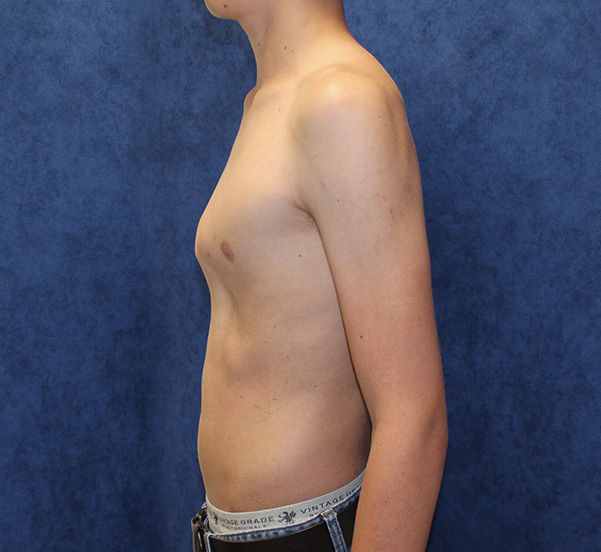
Sideways profile of pectus carinatum on a teenage male patient before treatment
04 December 2023
Jack’s condition was noticed at an early age by his mum who mentioned it to his doctor when he was 8 years old. They took X-rays and they told Jacks mum that everything looked structurally sound and was therefore just a cosmetic issue but if it was something that bothered him after he turned 18 they could do an operation. Jack’s mum was never told what it was causing his chest to protrude.
Over the next couple of years Jack’s condition got progressively worse to the extent that the bone was very visibly sticking out of his T -shirt. Louise, Jack’s mum was concerned and did some research and found that the most likely reason for it was that it was a condition called pectus carinatum.
Pectus carinatum is a chest wall deformity characterised by an outward protrusion of the sternum and ribs. It's also known as "pigeon chest" because the chest may resemble the shape of a pigeon's breast. It's usually a congenital condition, meaning it's present at birth, and it can become more noticeable during adolescence as the chest develops.
Whilst searching the internet, Louise discovered that other treatment options using a bracing system were available instead of surgery. The information they discovered was a huge relief to them as it meant it could be treated immediately. Louise says: “It meant Jack wouldn’t have to deal with years of feeling embarrassed about it especially as he was a keen swimmer, swimming twice a week for a club.
Most importantly, he wouldn’t have to have surgery to correct it or wait to be an adult to make that decision. We didn’t want Jack to have to go through all that so when we found LOC we booked a free initial virtual consultation. This call was really important for us as it confirmed what we believed was the reason for Jack’s chest looking the way it did. We felt it would be better to treat Jack before he started secondary school as we knew it wouldn’t be easy and we didn’t want it interfering with his studies or making him feel different in a new school. Jack beginning treatment in year 6 in a school he is familiar with was the right choice for him, as he has good friends around him that he could be open with about the treatment.”
Jack was assessed by Connor Mumford, one of LOC’s pectus specialists, on the 27th of July and a scan was taken of his chest. Apart from his Pectus Carinatum, Jack also had flared ribs. Louise recalls: “Connor was great, very informative and very reassuring – ‘yes, we can sort this out’.
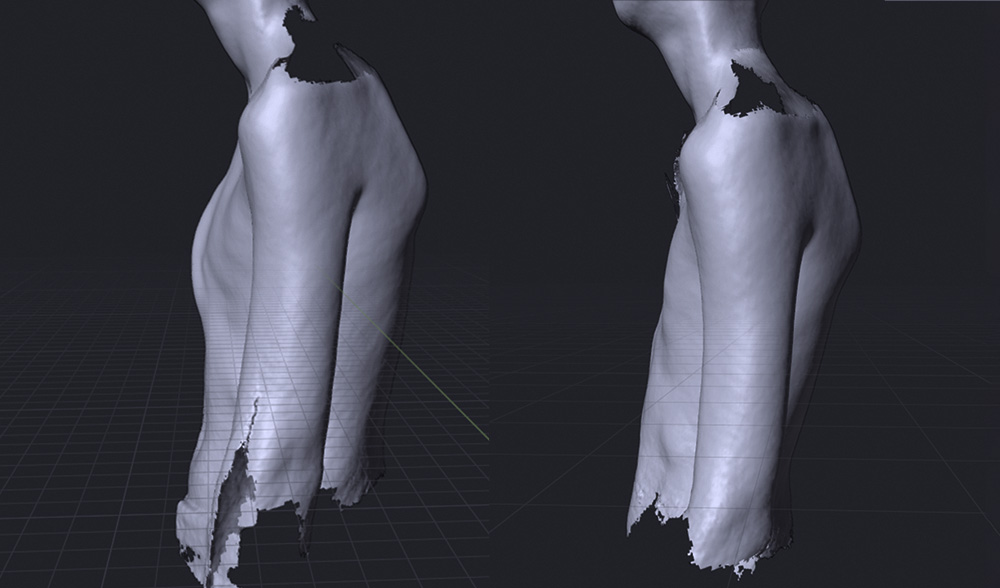
Left: Scan of Jack's chest before treatment and, right, after two months of bracing treatment
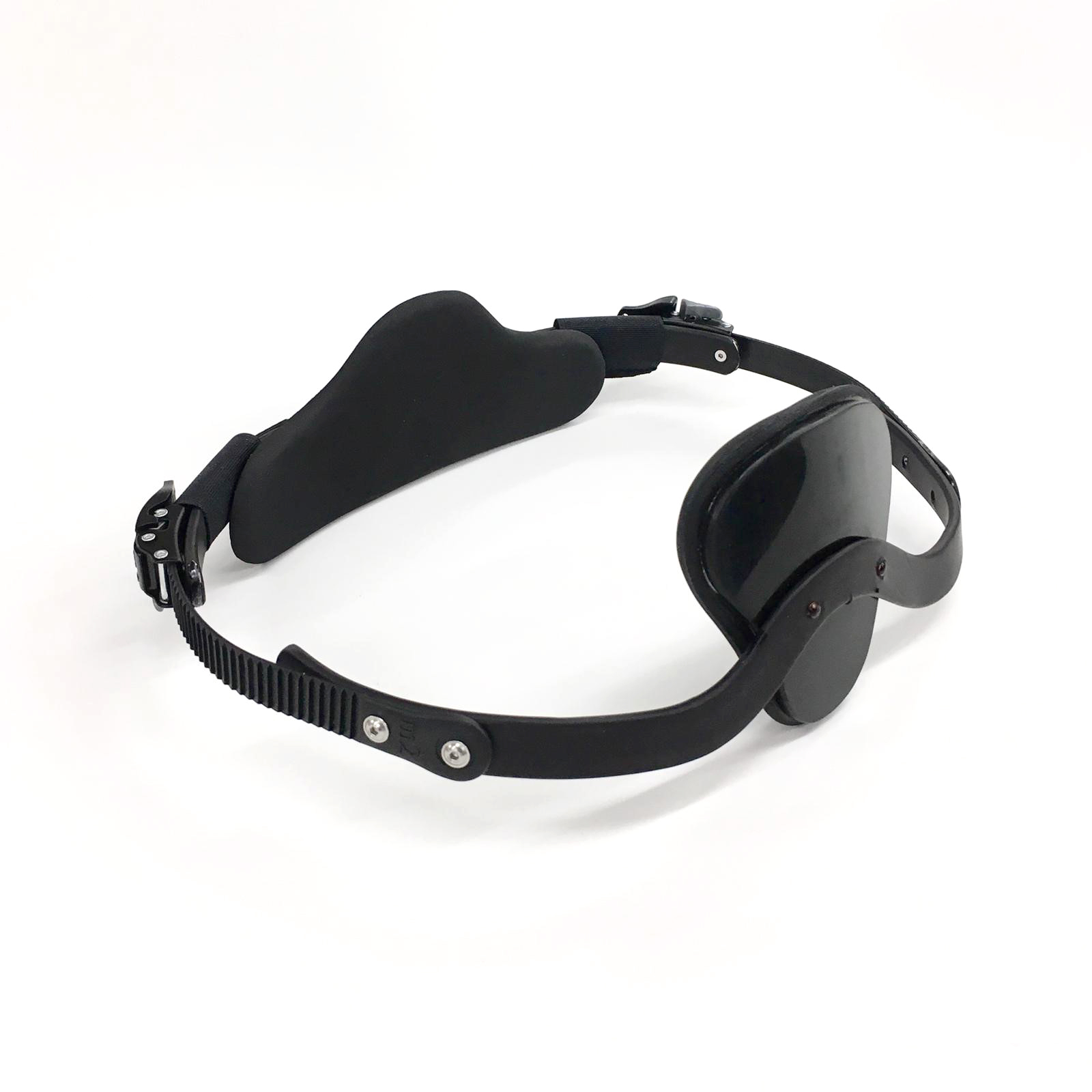
A bespoke dynamic chest compressor from the London Orthotic Consultancy
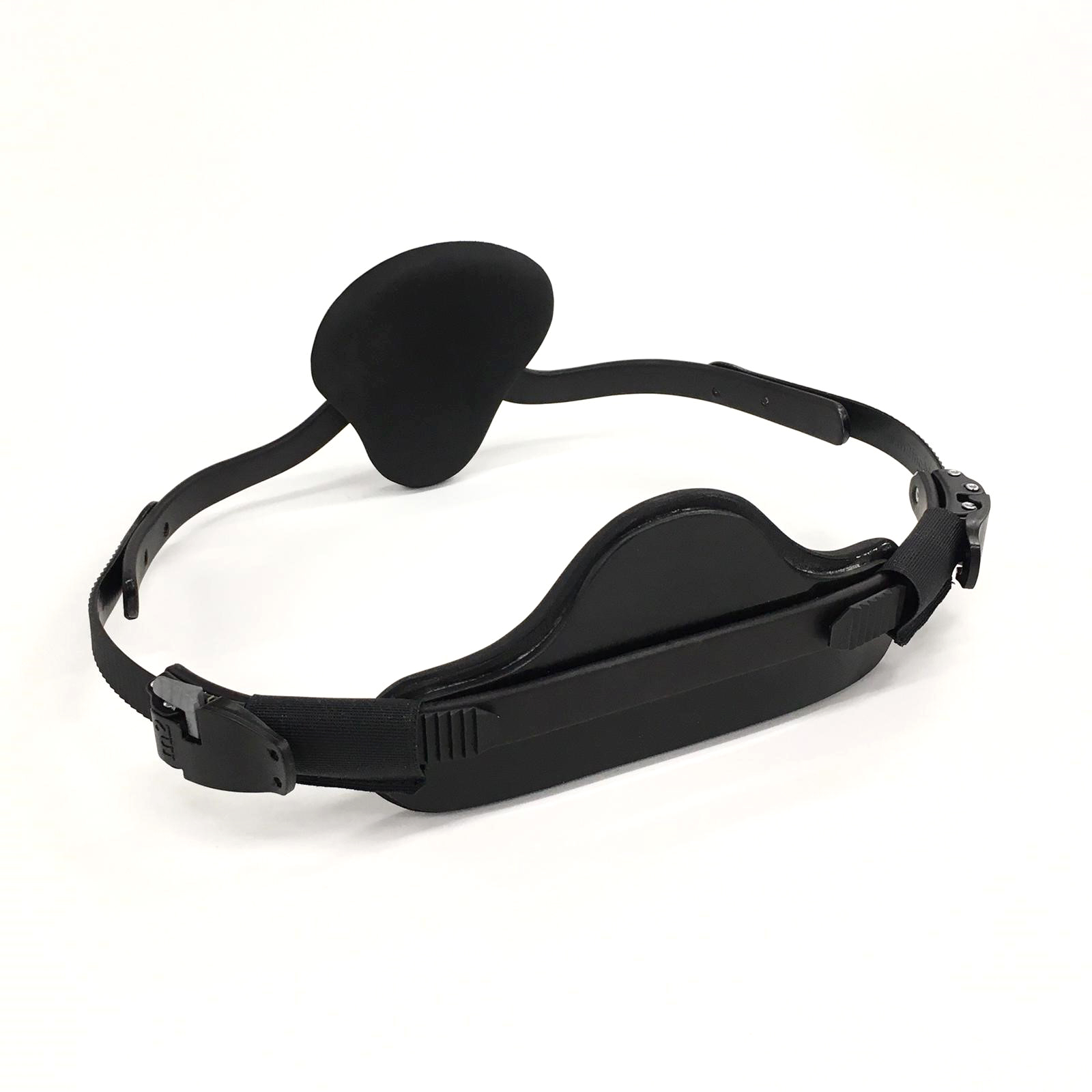
LOC treats Pectus Carinatum and flared ribs with two separate braces, the Dynamic Chest Compressor and a bespoke rib flaring brace in combination with specially developed Yoga classes. The Dynamic Chest Compressor is a custom-made orthosis that is designed for an individual’s anatomy and to specifically treat their particular type of deformity.
Its objective is to apply pressure over areas of the skeleton to remodel the chest and rib bones. This concept is called Wolfe’s Law and is used in dentistry where braces are used to remodel the jaw. We apply this pressure in two main areas: centrally on the sternum and (if the ribs are flared) either side at the bottom of the rib cage.
The braces were fitted on 31 August. To achieve optimum correction of chest shape, it's vital that patients adhere to the prescribed wearing regime – 22 hours a day.
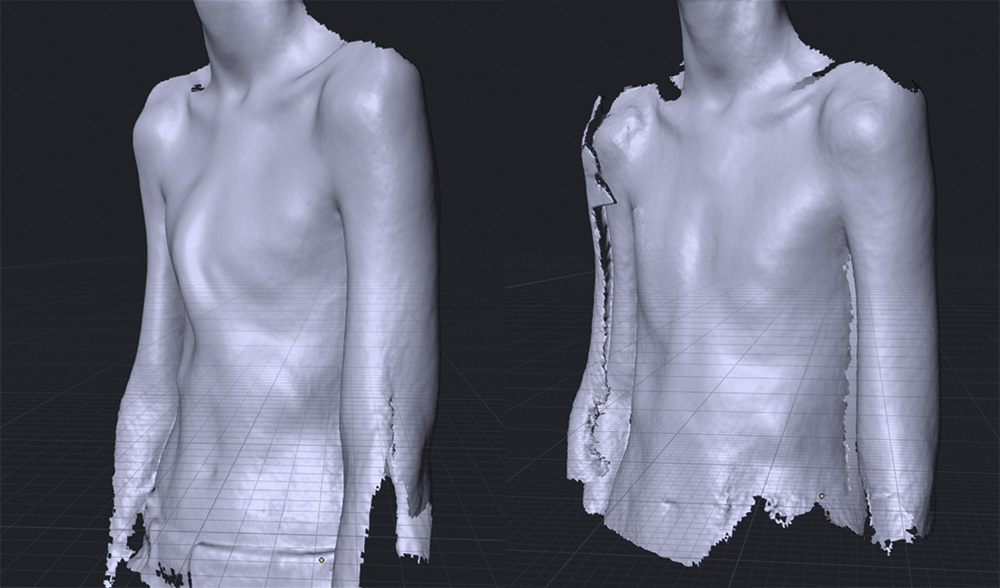
Left: Scan of Jack's chest before treatment and, right, after two months of bracing treatment
Louise comments: “Jack really struggled with wearing the brace at the beginning. The first week he only manged just a few hours, I worried he wouldn’t be able to cope with it and wearing overnight felt impossible.
Then during the next 4 weeks he was wearing it 12-14 hours a day and we were really happy that Jack had managed to get to this stage. We had another virtual meeting with Connor, this was his second review 5 weeks in, and he said: “Good work Jack, but if you can wear it at night as well that’s when you will see a significant difference.” Jack was brilliant and took Connor’s comment onboard and that night he wore the brace overnight and he has never looked back, wearing the brace all the time, only taking it off for swimming and showering. His commitment has been amazing.”
It is worth mentioning here that swimming is a great way to exercise when undergoing treatment for a pectus deformity as it helps to stretch the chest and increase its flexibility. Also, if doing backstroke or front crawl, this encourages the patient to take deep breaths which promote chest wall correction.
To monitor the progress of the treatment scans were taken at a review appointment on 26 October and these revealed that 90% correction had been achieved in just under two months. A final word from Louise: “Not surprisingly, we are over the moon with the results to date, a massive improvement and so quickly; the scans tell the full story.”
As Jack is still young and therefore skeletally immature, once 100% correction has been achieved, bracing will continue but in far more of a maintenance phase with reduced wear time of the braces.
If you or your child is concerned about their chest shape, please get in touch to book your free virtual pectus appointment today.
This depends on several factors; the position of the chest wall deformity, its severity, the flexibility of the chest, the kind of results wanting to be achieved and the age of the person undergoing treatment for pectus excavatum or pectus carinatum.
Early adolescence (roughly between the ages of 12-16 years old) – is an optimum age to start treatment, given that the chest is still maturing, and flexible, permanent correction is more easily achievable. Once bracing treatment is complete and a patient has stopped growing, the deformity will not return. For younger pectus patients, conservative bracing is used to keep a deformity from worsening and can help them to avoid surgery in later life.
For older pectus patients (between the ages of 20 to 30) results can be harder to achieve, as the costal cartilage hardens into the bone as a person matures. Over the years we have successfully treated many adults for both pectus excavatum and pectus carinatum and active adults with flexible chests can expect good results.
Again, this hugely depends on what a patient wants to achieve from treatment; whether that’s avoidance of surgery, improvement in the appearance of the chest shape, reduction in rib flaring etc. All these goals are taken into consideration during your first consultation. While there are no serious health risks of having pectus carinatum or excavatum – beyond the cosmetic – for many patients and parents, treatment outcomes involve improving confidence and self-esteem. During our 2018 Pectus Patient Survey, 92% of pectus carinatum patients surveyed said that treatment had a ‘major improvement’ or ‘an improvement’ on their social life.
You can read the results of our 2018 Pectus Patient Survey and quality of life questionnaire here.
Regular reviews are part of the treatment programme, preferably in clinic with one of our specialist orthotists, or via Skype consultations.
The number of appointments needed will vary from patient to patient but as a general rule, younger pectus patients who are growing at a faster rate will need to be seen more regularly for check-up appointments. This is to ensure that the brace fits well and is guiding the chest into the correct position as growth spurts occur. For other patients, this can be scaled back according to their individual needs and demands.
Regular appointments are beneficial for assessing progress, checking for signs of rubbing and determining whether another brace is needed. Appointments are also good for checking patient compliance to brace wearing and the breathing and exercise programme. At each appointment, we make time for patients to see our physiotherapist to fine-tune their exercise programme and check to see how a patient has been managing with the current programme.
We always advise coming in for appointments whenever you have any concerns about the brace or treatment programme, especially if a brace is rubbing or not fitting correctly. At the London Orthotic Consultancy, we have treated numerous international patients that have benefitted from specially designed braces that leave room to accommodate for growth and that can be adjusted remotely. Follow-up appointments for international patients are conducted via Skype.
This is a very common concern for patients considering treatment; in general, the dynamic chest compressor brace is easy to conceal if you are wearing a loose-fitting shirt for school or work. If you are wearing two chest braces – one for the main deformity and the other for rib flaring – then this may be more noticeable, especially under a t-shirt. Normally loose-fitting clothing will conceal the brace, though it’s likely it will be seen through tight-fitting clothes.
It is really important to continue exercising while going through bracing treatment. Exercise is fundamental to keeping the chest wall flexible. Our treatment programme incorporates a daily exercise routine of around 30-40 minutes of stretching using yoga poses, resistance bands, deep breathing exercises and general muscle stretches. Deep breathing exercises allow the lungs to expand against the chest wall, pushing it outwards.
Exercising with the brace on in the later stages of treatment can also make the chest correction more stable and permanent.
Swimming is one of the best forms of exercise to complement bracing treatment, as the body positions required to swim imitate the resistance band training designed to stretch the chest and increase its flexibility. Some swimming strokes are better for this than others, please check with your clinician. The brace should always be removed for contact sports and for swimming.
For most patients, one brace is often all that is needed to achieve a desired level of correction. They are each designed to last the duration of treatment and accommodate any growth that may occur in that time. Some patients have benefitted from having two braces – one to treat the main deformity and the other to treat rib flaring. For some pectus excavatum patients, having a brace apply pressure to the ribs – in addition to vacuum bell therapy – can greatly reduce the appearance of the depressed sternum area of the chest, forcing it upwards and outwards into a more corrective position.
If you are worried about your chest shape, or your child’s chest shape, then get in touch for a free Skype consultation with one of our pectus specialists who can assess their chest and discuss treatment options. We are always happy to communicate with local GPs, thoracic surgeons and consultants if a patient approaches us for bracing treatment after considering other options.